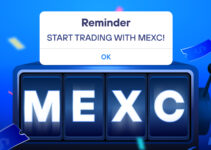The market trend of cryptocurrencies follows the laws of the financial markets closely. Both react according to the market’s supply-and-demand relationship and the macro and micro environmental influences, with each individual crypto-asset similar to a stock in the traditional financial markets. They each have their respective characteristics and supporting value propositions. Therefore, investors can form a more accurate forecast of market conditions by assessing market trends, news, fundamental and technical analysis based on available data.
This article will briefly describe the basic concepts, characteristics, and usage of Moving Average (MA).

What is a Moving Average (MA)

A moving average is a statistical analysis method that displays the average asset price over a certain period of time in a linear way. There are three types of moving averages most commonly used in the cryptocurrency field: the 5-day moving average (MA5), 10-day moving average (MA10), and the 30-day moving average (MA30). In MEXC, there are three thin lines of red, yellow and blue in the chart, which together with the candlestick chart form the most basic market performance chart.
The thin red line represents the MA5, the 5-day moving average;
The thin yellow line represents the MA10, the 10-day moving average;
The thin blue line represents the MA30, the 30-day moving average.
Pros and Cons of Moving Average MA
Pros: The moving average trends in the same direction as the candlestick, eliminating the “noise” caused by market fluctuations. This enables investors to see the cyclical trend of the market more accurately and objectively. The red, yellow and blue MAs move and converge to form quantifiable market patterns.
Cons: Because moving averages are calculated by past prices, it is relatively sluggish and often lag behind directional changes in price due to its statistical nature. Therefore, moving averages are usually more suitable for longer investment periods and are used together with other indicators such as RSI and MACD.
Example of using a Moving Average MA
A: Predicting uptrend or downtrend signals through MAs
In cryptocurrency trading, due to the 24/7 nature of the markets, it is important to use the 5-day MA as a reference standard in the short term to predict ups and downs in a weekly time period. In the mid-term, the 10-day MA is used as the standard for signals in a 10-day period, while the 30-day MA is used as a reference for signals in a monthly time frame.
We use the more obvious MA30 (the thin blue line) as an example to demonstrate:

The chart above shows the daily candlestick chart of two key market points of BTC in MEXC from September 2021 to November 2021.
1. The transaction price has been below the MA for some time: from September 1 to September 24, the blue MA line has remained above all the candlesticks despite attempts to break above. This would suggest that the spot traded in September was not held by traders in the previous session and that the majority of traders’ holding costs were located under the lowest price of $39,621.
After nearly a month of trading where the spot was consumed by the market, the low-cost spot in the market was bought and the price began to trade above $40,000 at the start of October 2021. As the higher price was recognized and traded by buyers, the market began to improve. This continuously rising price drove market sentiment in the direction of a further push in the price of the currency.
The breakthrough in early October 2021 was the signal of a new market rally.
2. The price has traded above the MA for a long time: around October 17, 2021, the price had been above the MA30 for half a month. At this point, the market buyers have gradually been unable to afford the high prices and sought to negotiate, as indicated by the long lower shadows and the long lower wicks.
After October 17, although the coin price was still rising, the lower wicks grew longer, indicating a growing demand from buyers for a lower price. It was not until around October 26 that the two sides of the trade started a price game, entering a two-week phase of price negotiation during which the highest price was recorded (68,999.99), after which the coin entered a downtrend and started to converge with the previous trading low ($39,621.28) after November 27.
Whenever the candlestick deviates from the MA, it is the start of an upward/downward trend, and when the market ends, the deviating MA will inevitably approach the candlestick again.
B. Crossover Signal
When two MA lines with different time periods cross each other, the chart will generate a crossover signal. This signal represents the convergence of the holding costs of the two time periods, indicating that more buyers and sellers in the market will take the same action. This increased trading participation can make the market move positively or negatively. Generally speaking, the longer the two overlapping MAs are represented, the more dramatic the movement in market sentiment. Therefore, through the crossover combined with the candlestick indices, reference information for investment behavior can be formed.

A: Generally speaking, when the moving average crosses below the candlestick, it shows that the current price is higher than the average cost, which may indicate a rise in market prices.
B: When the moving average crosses above the candlestick, it shows that the current price is lower than the average cost, which may indicate a fall in market prices.
Closing thoughts
By using a combination of Moving Averages, investors can quickly grasp the relative suitability of buying and selling points. Through analyzing the different patterns, crossovers, and directional trends of the MAs, investors can accurately assess the state of the market and better speculate on the future direction of the market in trading.
Disclaimer: Trading crypto involves significant risk and can result in the loss of your invested capital. The materials are not related to the provision of advice regarding investment, tax, legal, financial, accounting, consulting, or any other related services and are not recommendations to buy, sell, or hold any asset. MEXC Learn solely provides information, but not financial advice. You should ensure that you fully understand the risk involved before investing.
Join MEXC and Start Trading Today!



